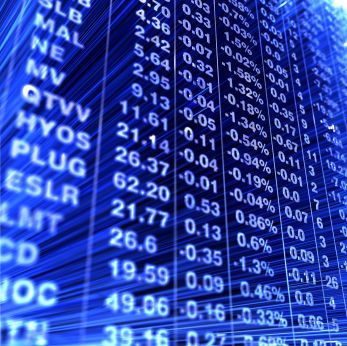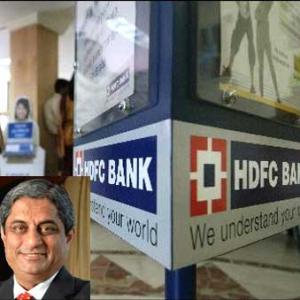 Many get confused between investing in equities and equity mutual funds. They think equity funds are the same as equities or stocks.
Many get confused between investing in equities and equity mutual funds. They think equity funds are the same as equities or stocks.
The genesis of this misconception may be the way the equity funds are marketed. The classic example is the way the Morgan Stanley Growth Fund units issue was marketed in 1994. Or, even the way these are sold.
An equity fund usually collects money from a large number of investors and invests in various stocks, based on the fund house's internal assessment and outlook. The performance of the portfolio is measured by the increase or decrease in net asset value.
Though both equity and equity funds have market-related risk and almost similar risk-return characteristics, they are some fundamental differences.
Risk profile: Mutual fund schemes investing in equities are less risky propositions than direct investments in equities or stocks. By diversifying the portfolio in a fairly large number of stocks, equity funds have a lower risk profile.
Suppose you'd invested in GAIL and ONGC on January 14, 2011, when the stocks closed at Rs 487 and Rs 1,179, respectively, and exited on January 21, 2011, when the closing prices were Rs 453 and Rs 1,105, respectively.
The decrease in prices is around 7 and 6.2 per cent, respectively, in a span of seven days. If you'd invested in equity funds like UTI Energy Fund, the NAV would have dropped two per cent from Rs 10.85 to Rs 10.66. This shows funds are less risky than equity.
Shares will show a faster upward move compared to equity funds, as the risk-reward ratio is higher.
NAV and market price: There is a difference between the market price of a stock and the NAV of a fund. The price of a share is determined by the demand and supply for it in the market.
Whereas, the NAV of a scheme is determined mathematically, by dividing the prices of securities in the portfolio by the number of units outstanding.
The absolute NAV may not really have much significance, but the absolute price of a share does.
For instance, you invest in two funds with an NAV of Rs 10 and Rs 100. If the market moves up by around 10 per cent, the NAV of Rs 10 will become Rs 11 and Rs 100 will become Rs 110. Despite such a huge difference in NAV, the absolute return your investment will fetch is only 10 per cent.
In case of stocks, the general tendency is that the higher priced scrips, due to their better governance and higher floating stock, are less volatile as compared to lower priced ones. The price movement of HUL or Infosys is less as compared to Unitech or Jaiprakash Associates.
Performance measurement: While calculating the returns from an equity fund, the dividends declared have a great importance as compared to shares. Suppose you had invested in SBI on December 31, 2009, at Rs 2,270 and exited on December 31, 2010, at the closing price of Rs 2,811. SBI had declared an interim dividend of Rs 10 and a final dividend of Rs 20 per share in this period. Your total return is 25 per cent, that is, dividend income of Rs 30 and capital gains of Rs 541.
Now, suppose you invested in a fund, say HDFC Top 200-Dividend Plan at an NAV of Rs 46.67 on December 31, 2009. It paid a dividend of Rs 4 per unit on March 11, 2010. Suppose you redeem the units on December 31, 2010, at Rs 53.34 per unit. The total return you generated will be 22.86 per cent (dividend income of Rs 4 plus capital gains of Rs 6.67).
From the example above, it is very clear that the dividend income, in the case of equities, may not be a significant percentage many a times while calculating returns, in case of equity funds it is an important element. This will be applicable only if you opt for a dividend plan and not a growth plan.
Impact of dividend on price: Equity funds pay dividend from the surplus they generate, either by way of income earned on investments or capital gains when it books profit on the stocks they had invested in. Whenever an equity fund declares dividend, it is paying out of the NAV of the fund and hence the value of NAV will automatically fall to the extent of the dividend paid.
In equities or shares, the dividend is paid out of the profits available for appropriation. The market price of the equity may or may not go down in the same proportion in spite of the payment of dividend.
Let's understand this through an example. The NAV of HDFC Top 200-Dividend Plan fell from Rs 46.58 as on March 11, 2010, to Rs 42.53 on March 12, 2010, after becoming ex-date for a dividend of Rs 4 per unit. In case of SBI, the price as on June 8, 2010, was Rs 2,284 and after the ex-date of final dividend of Rs 20 per share, it became Rs 2,272 (a decline of only Rs 12 as compared to dividend of Rs 20 per share).
It is very important that you understand the investment product you put your money in, equities or equity funds. The product you buy should suit your investment requirement. To be a successful investor, whether in equity or equity funds, it is important that you have two important skills (meant for successful investing): a proper approach to investing and an investment discipline.
<I>The writer is a freelancer</I>









